Non-toxic cosmetics have become an increasingly popular trend in the beauty industry. With concerns about health and the environment, consumers are more interested in using non-toxic beauty products. In this article, we will explore the significance of non-toxic cosmetics and the benefits they offer to users.
What are Non-Toxic Cosmetics?
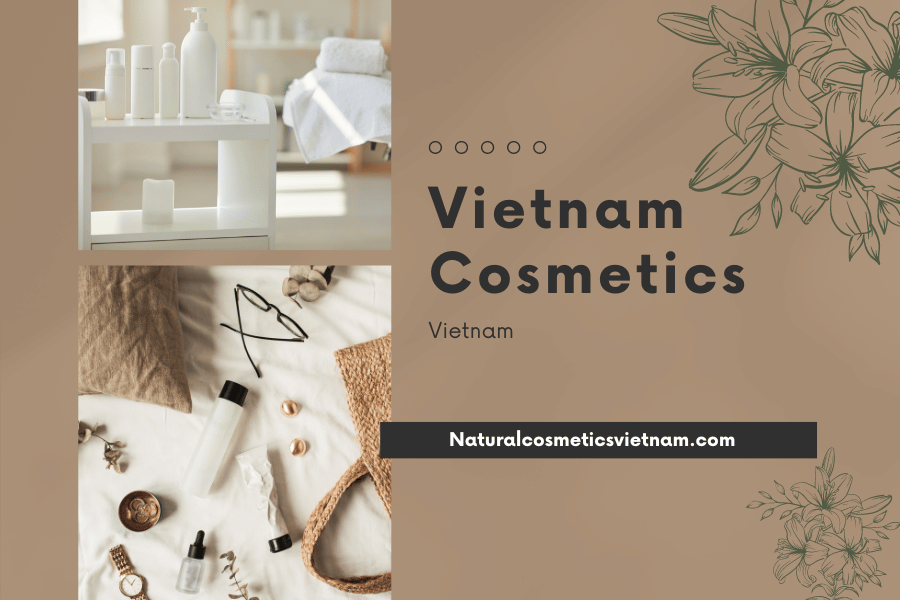
Confidence and Safety with Non-Toxic Cosmetics
Non-toxic cosmetics are beauty products that do not contain harmful or toxic substances. They are formulated without ingredients that have been linked to negative health effects or environmental damage. These cosmetics prioritize the use of safe and natural ingredients, avoiding chemicals such as lead, parabens, phthalates, formaldehyde, and sulfates.
Non-toxic cosmetics are designed to provide beauty and skincare benefits without compromising the well-being of users. They often incorporate organic, plant-based, and sustainable ingredients, which are gentle on the skin and less likely to cause allergies or irritations. Additionally, non-toxic cosmetics are typically produced using eco-friendly practices that minimize environmental impact.
To ensure the safety and integrity of non-toxic cosmetics, many brands undergo third-party certifications and adhere to stringent standards. These certifications, such as Organic, Cruelty-Free, and Vegan, provide consumers with assurance that the products they are using are free from harmful chemicals and have been produced ethically.
By choosing non-toxic cosmetics, individuals can enjoy the benefits of effective beauty products while minimizing their exposure to potentially harmful substances. These cosmetics promote a healthier approach to personal care, supporting both personal well-being and environmental sustainability.
Ingredients of non-toxic cosmetics
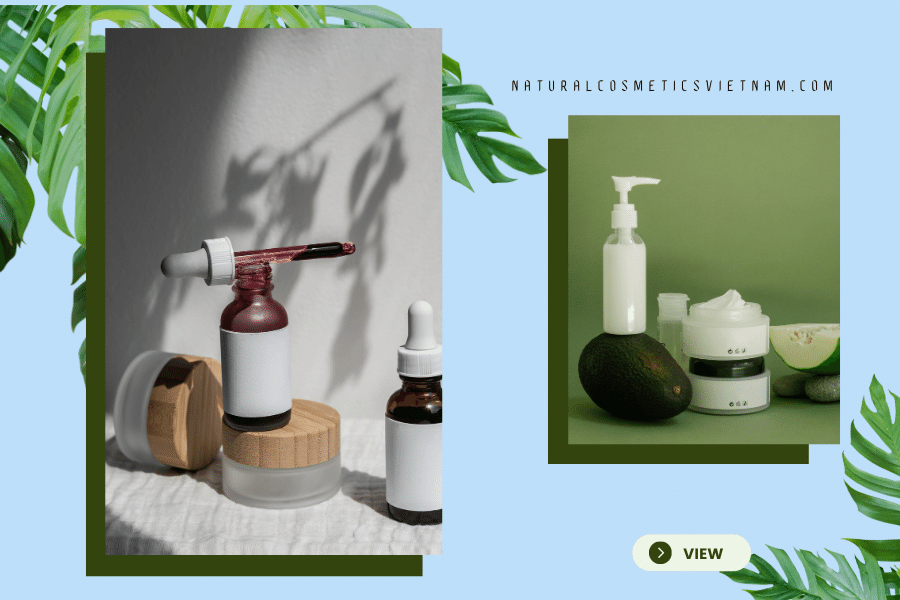
Confidence and Safety with Non-Toxic Cosmetics
Non-toxic cosmetics prioritize the use of safe and natural ingredients, avoiding harmful or toxic substances. While the specific ingredients may vary depending on the product and brand, here are some common ingredients found in non-toxic cosmetics:
Natural Oils
Natural oils are commonly used in non-toxic cosmetics for their nourishing, moisturizing, and skincare benefits. Here are some popular natural oils found in non-toxic cosmetics:
- Jojoba Oil: Jojoba oil is a versatile oil that closely resembles the natural oils produced by the skin. It helps to moisturize and balance the skin without clogging pores, making it suitable for various skin types. Jojoba oil is known for its hydrating, soothing, and non-greasy properties.
- Coconut Oil: Coconut oil is a deeply moisturizing oil that provides hydration and nourishment to the skin. It is rich in fatty acids and antioxidants, which help to improve skin elasticity and promote a smooth, soft complexion. Coconut oil is often used in body lotions, lip balms, and hair care products.
- Argan Oil: Argan oil is derived from the kernels of the argan tree and is rich in vitamin E, antioxidants, and fatty acids. It has moisturizing and anti-aging properties, helping to hydrate the skin, reduce inflammation, and promote a youthful appearance. Argan oil is commonly used in facial serums, moisturizers, and hair treatments.
- Rosehip Oil: Rosehip oil is extracted from the seeds of rosehip fruit and is rich in vitamins A, C, and antioxidants. It is known for its regenerative and brightening properties, helping to improve the appearance of scars, hyperpigmentation, and uneven skin tone. Rosehip oil is often used in facial oils, serums, and anti-aging products.
- Sweet Almond Oil: Sweet almond oil is a lightweight and non-greasy oil that is easily absorbed by the skin. It is moisturizing, soothing, and gentle, making it suitable for sensitive skin. Sweet almond oil helps to nourish and soften the skin, and it is commonly used in body lotions, massage oils, and facial cleansers.
- Olive Oil: Olive oil is a rich source of antioxidants and fatty acids, making it beneficial for hydrating and protecting the skin. It helps to lock in moisture and improve skin elasticity. Olive oil is often used in body oils, lip balms, and soaps.
- Avocado Oil: Avocado oil is derived from the flesh of the avocado fruit and is rich in vitamins, antioxidants, and omega-3 fatty acids. It is deeply moisturizing, nourishing, and helps to soothe dry and irritated skin. Avocado oil is commonly used in facial oils, body butters, and hair care products.
These natural oils offer a range of benefits and are often chosen for their hydrating, soothing, and nourishing properties. They are used in various non-toxic cosmetics to promote healthier, more radiant skin and hair.
Plant Extracts
Plant extracts are widely used in non-toxic cosmetics for their beneficial properties and skincare benefits. Here are some common plant extracts found in non-toxic cosmetics:
- Aloe Vera Extract: Aloe vera is well-known for its soothing and moisturizing properties. It helps to hydrate the skin, reduce inflammation, and promote healing. Aloe vera extract is often used in skincare products such as moisturizers, gels, and soothing treatments.
- Chamomile Extract: Chamomile has calming and anti-inflammatory properties, making it suitable for sensitive or irritated skin. Chamomile extract can help soothe redness, reduce inflammation, and promote a more even complexion. It is commonly found in cleansers, toners, and serums.
- Green Tea Extract: Green tea is rich in antioxidants that help protect the skin from environmental damage. It has anti-inflammatory properties and can soothe irritated skin. Green tea extract is often used in anti-aging products, serums, and moisturizers.
- Calendula Extract: Calendula has soothing and healing properties, making it beneficial for dry or irritated skin. It helps to reduce inflammation, promote skin repair, and soothe minor skin irritations. Calendula extract is commonly found in creams, ointments, and balms.
- Lavender Extract: Lavender is known for its calming and relaxing properties. Lavender extract has soothing effects on the skin and can help reduce redness and irritation. It is often used in skincare products like cleansers, toners, and facial masks.
- Rosemary Extract: Rosemary has antioxidant and antimicrobial properties, making it beneficial for the skin. It can help protect against free radicals, reduce inflammation, and promote a healthier complexion. Rosemary extract is commonly used in cleansers, moisturizers, and hair care products.
- Cucumber Extract: Cucumber extract is hydrating and refreshing for the skin. It helps to soothe and calm the skin, reduce puffiness, and provide a cooling sensation. Cucumber extract is often used in facial mists, eye creams, and hydrating masks.
These plant extracts offer a range of benefits and are chosen for their soothing, antioxidant, anti-inflammatory, and hydrating properties. They are used in non-toxic cosmetics to provide natural skincare benefits and contribute to a healthier, more balanced complexion.
Essential Oils
Essential oils are commonly used in non-toxic cosmetics for their aromatic, therapeutic, and skincare properties. Here are some popular essential oils found in non-toxic cosmetics:
- Lavender Essential Oil: Lavender oil is known for its calming and soothing properties. It can help promote relaxation, reduce stress, and aid in better sleep. Lavender oil is often used in skincare products, such as facial oils, moisturizers, and body lotions.
- Tea Tree Essential Oil: Tea tree oil has antimicrobial and antiseptic properties, making it beneficial for treating acne-prone or oily skin. It helps to reduce inflammation, fight bacteria, and control excess oil production. Tea tree oil is commonly used in cleansers, spot treatments, and facial masks.
- Rosemary Essential Oil: Rosemary oil has stimulating and invigorating properties. It can help improve circulation, promote a healthy scalp, and stimulate hair growth. Rosemary oil is often used in hair care products like shampoos, conditioners, and scalp treatments.
- Peppermint Essential Oil: Peppermint oil provides a cooling and refreshing sensation. It can help relieve muscle tension, soothe headaches, and promote a sense of alertness. Peppermint oil is commonly used in lip balms, body lotions, and foot creams.
- Geranium Essential Oil: Geranium oil has balancing and toning properties for the skin. It can help improve skin elasticity, balance sebum production, and promote a more youthful complexion. Geranium oil is often used in facial serums, toners, and moisturizers.
- Chamomile Essential Oil: Chamomile oil has calming and anti-inflammatory properties. It can help soothe sensitive or irritated skin, reduce redness, and promote a more even skin tone. Chamomile oil is commonly used in skincare products like cleansers, serums, and facial oils.
- Ylang-Ylang Essential Oil: Ylang-ylang oil has a sweet and floral scent. It is known for its balancing and mood-enhancing properties. Ylang-ylang oil is often used in perfumes, body oils, and bath products.
It’s important to note that essential oils are highly concentrated and should be used with caution. Proper dilution and adherence to recommended usage guidelines are necessary to avoid skin irritation or sensitivities. Non-toxic cosmetics carefully formulate and incorporate essential oils to provide their aromatic benefits while ensuring they are safe for use on the skin.
Natural Butters
Natural butters are widely used in non-toxic cosmetics for their emollient, moisturizing, and nourishing properties. Here are some common natural butters found in non-toxic cosmetics:
- Shea Butter: Shea butter is derived from the nuts of the shea tree. It is rich in vitamins, fatty acids, and antioxidants. Shea butter provides intense hydration, helps to soften and smooth the skin, and promotes a healthy skin barrier. It is commonly used in body butters, lip balms, and moisturizers.
- Cocoa Butter: Cocoa butter is extracted from the seeds of the cocoa bean. It is a rich source of antioxidants, vitamins, and fatty acids. Cocoa butter deeply moisturizes and nourishes the skin, improves elasticity, and helps to reduce the appearance of scars and stretch marks. It is often found in body lotions, creams, and lip balms.
- Mango Butter: Mango butter is obtained from the seeds of the mango fruit. It is high in fatty acids and antioxidants. Mango butter moisturizes and softens the skin, promotes cell regeneration, and helps to improve skin elasticity. It is commonly used in body butters, creams, and hair care products.
- Kokum Butter: Kokum butter is derived from the seeds of the Garcinia indica fruit. It is known for its non-greasy texture and high content of beneficial fatty acids. Kokum butter deeply moisturizes and nourishes the skin, helps to soothe dryness and inflammation, and promotes skin elasticity. It is often used in body butters, lip balms, and moisturizers.
- Avocado Butter: Avocado butter is derived from the fruit of the avocado tree. It is rich in vitamins, antioxidants, and fatty acids. Avocado butter deeply hydrates and nourishes the skin, helps to improve skin texture, and provides a protective barrier against moisture loss. It is commonly found in body butters, face creams, and hair care products.
- Cupuaçu Butter: Cupuaçu butter is obtained from the seeds of the cupuaçu fruit. It is rich in antioxidants, fatty acids, and phytosterols. Cupuaçu butter moisturizes and softens the skin, improves skin elasticity, and helps to restore skin’s natural moisture balance. It is often used in body butters, lotions, and lip balms.
These natural butters offer deep hydration, nourishment, and protection for the skin. They are used in non-toxic cosmetics to provide luxurious textures, promote skin softness, and enhance overall skin health.
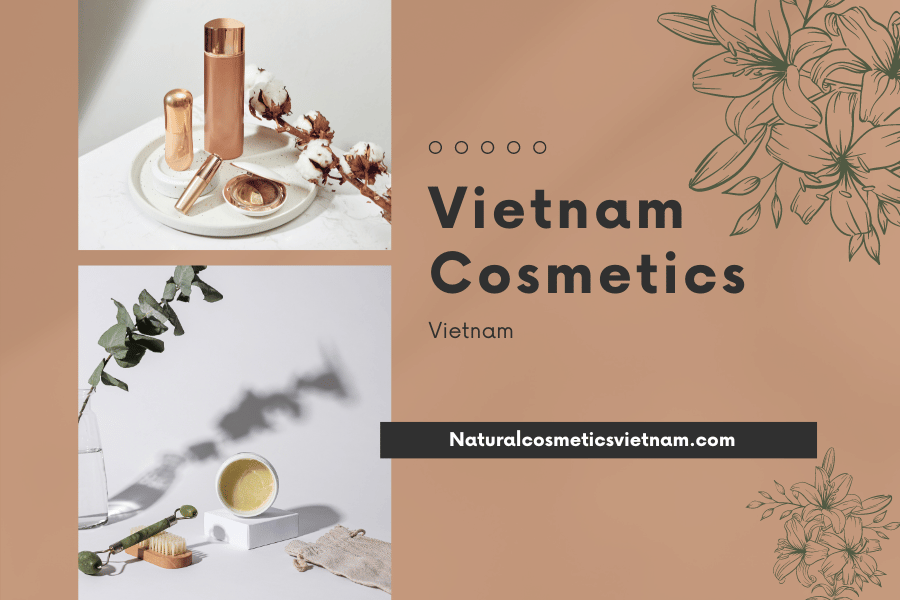
Confidence and Safety with Non-Toxic Cosmetics
Botanicals
Botanicals, or plant-derived ingredients, are commonly used in non-toxic cosmetics for their beneficial properties and skincare benefits. Here are some common botanicals found in non-toxic cosmetics:
- Rose Extract: Rose extract is derived from rose petals and is known for its soothing and hydrating properties. It helps to calm and balance the skin, reduce redness, and provide a pleasant fragrance. Rose extract is often used in toners, serums, and facial masks.
- Chamomile Extract: Chamomile extract has calming and anti-inflammatory properties. It helps to soothe and soften the skin, reduce redness and irritation, and promote a more even complexion. Chamomile extract is commonly found in cleansers, toners, and creams.
- Cucumber Extract: Cucumber extract is refreshing and hydrating for the skin. It helps to soothe and cool the skin, reduce puffiness, and provide a gentle and calming effect. Cucumber extract is commonly used in facial mists, eye creams, and masks.
- Calendula Extract: Calendula extract is derived from marigold flowers and is known for its soothing and healing properties. It helps to reduce inflammation, promote skin repair, and soothe minor skin irritations. Calendula extract is often found in creams, ointments, and balms.
- Green Tea Extract: Green tea extract is rich in antioxidants and has anti-inflammatory properties. It helps to protect the skin from environmental damage, soothe inflammation, and provide a brightening effect. Green tea extract is commonly used in facial cleansers, serums, and moisturizers.
- Witch Hazel Extract: Witch hazel extract is derived from the leaves and bark of the witch hazel shrub. It has astringent and toning properties, helping to tighten the skin, reduce excess oil, and minimize the appearance of pores. Witch hazel extract is often used in toners, facial mists, and spot treatments.
- Ginseng Extract: Ginseng extract is known for its energizing and revitalizing properties. It helps to improve skin tone and texture, enhance radiance, and promote a more youthful appearance. Ginseng extract is commonly found in anti-aging products, serums, and facial masks.
These botanical extracts offer a range of benefits for the skin and are chosen for their soothing, antioxidant, anti-inflammatory, and revitalizing properties. They contribute to the effectiveness and natural formulation of non-toxic cosmetics, promoting healthier, more radiant skin.
Fruit Extracts
Fruit extracts are commonly used in non-toxic cosmetics for their antioxidant-rich properties, vitamins, and natural fruit acids. Here are some common fruit extracts found in non-toxic cosmetics:
- Citrus Fruit Extracts: Citrus fruits such as oranges, lemons, and grapefruits are rich in vitamin C and natural fruit acids. They help to brighten the skin, promote a more even complexion, and provide a refreshing scent. Citrus fruit extracts are commonly found in cleansers, toners, and facial serums.
- Berry Extracts: Berries like strawberries, blueberries, and cranberries are known for their antioxidant properties and high vitamin content. Berry extracts help to protect the skin against free radicals, promote a youthful appearance, and nourish the skin. They are often used in facial masks, serums, and moisturizers.
- Pomegranate Extract: Pomegranate is a fruit rich in antioxidants, vitamins, and minerals. Pomegranate extract helps to hydrate, rejuvenate, and protect the skin from environmental damage. It is commonly found in facial serums, moisturizers, and anti-aging products.
- Papaya Extract: Papaya contains natural enzymes such as papain, which gently exfoliate and brighten the skin. Papaya extract helps to remove dead skin cells, promote a smoother complexion, and improve skin texture. It is often used in facial peels, masks, and exfoliating cleansers.
- Pineapple Extract: Pineapple contains bromelain, an enzyme that helps to exfoliate and improve skin texture. Pineapple extract helps to promote a brighter, smoother complexion and can be found in facial masks, exfoliators, and cleansers.
- Watermelon Extract: Watermelon is hydrating and rich in vitamins A and C. Watermelon extract helps to moisturize, refresh, and soothe the skin. It is commonly used in hydrating mists, facial moisturizers, and overnight masks.
- Kiwi Extract: Kiwi is packed with vitamin C, antioxidants, and natural enzymes. Kiwi extract helps to brighten the skin, promote a more even complexion, and provide a youthful glow. It is often found in facial serums, toners, and brightening treatments.
These fruit extracts offer a range of benefits for the skin, including hydration, antioxidant protection, and exfoliation. They are used in non-toxic cosmetics to provide natural fruit-based skincare benefits and contribute to a healthier, more radiant complexion.
Natural Preservatives
Natural preservatives are used in non-toxic cosmetics to help extend the shelf life of products without relying on synthetic preservatives. Here are some common natural preservatives found in non-toxic cosmetics:
- Vitamin E (Tocopherol): Vitamin E is a natural antioxidant that helps prevent oxidation and spoilage of oils and other ingredients in cosmetic products. It helps to maintain the stability and freshness of the product and can be found in various non-toxic cosmetics, such as creams, serums, and oils.
- Grapefruit Seed Extract: Grapefruit seed extract is derived from the seeds, pulp, and white membranes of grapefruits. It has antimicrobial properties and can help inhibit the growth of bacteria and fungi in cosmetic products. Grapefruit seed extract is often used as a natural preservative in non-toxic skincare products.
- Radish Root Ferment Filtrate: Radish root ferment filtrate is a natural antimicrobial ingredient derived from fermented radish roots. It helps to inhibit the growth of microorganisms and extend the shelf life of cosmetic products. Radish root ferment filtrate is commonly used as a natural preservative in non-toxic cosmetics.
- Leuconostoc/Radish Root Ferment Filtrate: Leuconostoc/radish root ferment filtrate is a natural antimicrobial ingredient obtained from the fermentation of radish roots. It helps prevent the growth of bacteria and fungi in cosmetic products, acting as a natural preservative.
- Potassium Sorbate: Potassium sorbate is a salt derived from sorbic acid, which is naturally found in some fruits. It has antimicrobial properties and helps inhibit the growth of mold, yeast, and bacteria in cosmetic formulations. Potassium sorbate is commonly used as a natural preservative in non-toxic cosmetics.
- Sodium Benzoate: Sodium benzoate is a salt derived from benzoic acid, which occurs naturally in some fruits and spices. It acts as an antimicrobial agent and helps prevent the growth of bacteria and fungi in cosmetic products. Sodium benzoate is used as a natural preservative in non-toxic skincare and hair care products.
These natural preservatives are used in non-toxic cosmetics to maintain product integrity, stability, and safety without relying on synthetic preservatives such as parabens. They help to inhibit the growth of microorganisms and extend the shelf life of products while ensuring their non-toxic formulation.
Minerals
Minerals are commonly used in non-toxic cosmetics for their various properties, including color, sun protection, and skin benefits. Here are some common minerals found in non-toxic cosmetics:
- Titanium Dioxide: Titanium dioxide is a naturally occurring mineral that provides broad-spectrum UV protection. It reflects and scatters UV rays, making it an effective physical sunscreen ingredient. Titanium dioxide is commonly used in non-toxic sunscreens, foundations, and tinted moisturizers.
- Zinc Oxide: Zinc oxide is another mineral that offers broad-spectrum UV protection. Like titanium dioxide, it acts as a physical sunscreen by reflecting and scattering UV rays. Zinc oxide is often found in non-toxic sunscreens, especially those marketed as mineral sunscreens.
- Mica: Mica is a natural mineral that is used to add shimmer, sparkle, and luminosity to cosmetics. It provides a subtle glow and light-reflecting effect, enhancing the appearance of the skin. Mica is commonly found in eyeshadows, highlighters, and other makeup products.
- Iron Oxides: Iron oxides are mineral pigments that provide color to cosmetics. They come in various shades, including red, yellow, and black, and are used to create a wide range of makeup products, such as foundations, blushes, eyeshadows, and lipsticks. Iron oxides are often used as a safer alternative to synthetic colorants.
- Kaolin Clay: Kaolin clay is a type of mineral clay that is known for its absorbent and gentle exfoliating properties. It helps to cleanse and purify the skin, absorb excess oil, and promote a smoother complexion. Kaolin clay is commonly used in facial masks, cleansers, and scrubs.
- Silica: Silica is a mineral that helps to absorb excess oil and control shine on the skin. It provides a mattifying effect and helps to create a smooth, even surface for makeup application. Silica is often used in non-toxic primers, powders, and mattifying products.
These minerals are frequently used in non-toxic cosmetics to provide sun protection, add color, enhance the appearance of the skin, and offer skin benefits. They are considered safe and are often preferred by those seeking non-toxic and natural cosmetic options.
Common Types of Non-Toxic Cosmetics
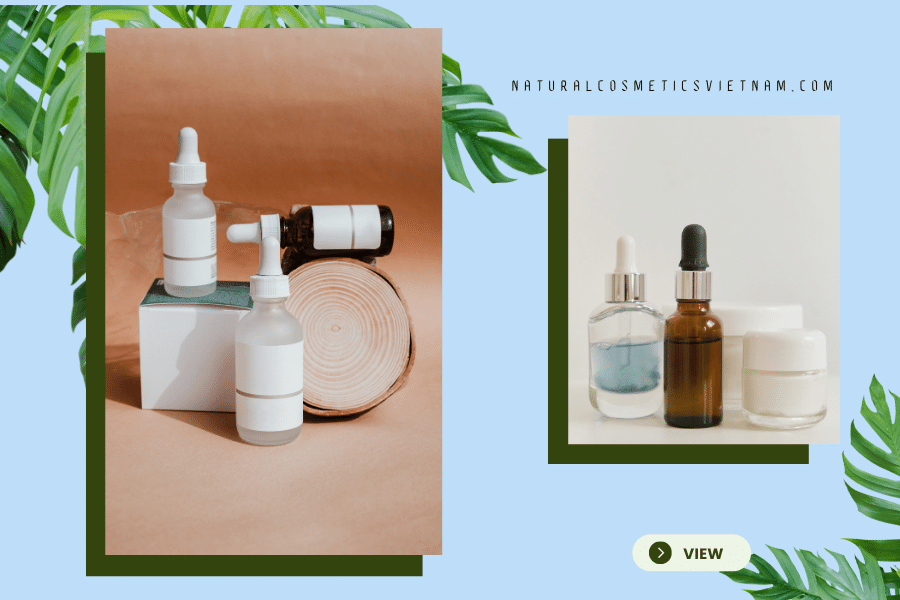
Confidence and Safety with Non-Toxic Cosmetics
Paraben-free cosmetics
Paraben-free cosmetics are products that do not contain parabens, which are a group of preservatives commonly used in cosmetics and personal care products. Parabens help prevent the growth of bacteria, yeast, and mold in these products, extending their shelf life. However, there have been concerns about the potential health effects of parabens, particularly their estrogenic activity and possible links to hormonal disruption.
By opting for paraben-free cosmetics, individuals can reduce their exposure to these preservatives. Paraben-free products are formulated with alternative preservation systems that are considered safer and less controversial. These can include natural preservatives, such as essential oils, plant extracts, or organic acids, as well as other synthetic preservatives that have been deemed safe for use.
Choosing paraben-free cosmetics offers several potential benefits. First and foremost, it may reduce the risk of adverse reactions or skin sensitivities associated with paraben exposure. Some individuals may be more prone to skin irritation or allergies, and avoiding parabens can be a proactive step in preventing such issues.
Moreover, paraben-free cosmetics align with a growing demand for safer and more natural beauty products. Many consumers are becoming more conscious of the ingredients they apply to their skin and are actively seeking out products that are free from potentially harmful substances. Paraben-free cosmetics cater to this demand, providing a safer alternative for those who prioritize non-toxic options.
It’s worth noting that the absence of parabens does not guarantee that a product is entirely free from other potentially harmful ingredients. When choosing paraben-free cosmetics, it’s essential to read the product labels and consider other factors like fragrance, dyes, and additional preservatives. By being informed and making conscious choices, individuals can embrace paraben-free cosmetics as part of a healthier and more sustainable beauty routine.
Lead-free cosmetics
Lead-free cosmetics are products that are formulated without the presence of lead, a toxic heavy metal. Lead has historically been used in various cosmetic products, including lipsticks, eyeliners, and foundations, due to its ability to impart color and opacity. However, prolonged exposure to lead can have detrimental effects on human health, particularly when it is absorbed through the skin or accidentally ingested.
The use of lead in cosmetics has raised concerns due to its potential toxicity and associated health risks. Lead is a neurotoxin that can accumulate in the body over time, posing serious health hazards, especially to children and pregnant women. It can adversely affect the nervous system, lead to developmental delays, and cause long-term cognitive impairments.
By choosing lead-free cosmetics, individuals can minimize their exposure to this toxic substance. Manufacturers of lead-free cosmetics use alternative ingredients and formulations that do not include lead-based pigments or contaminants. These products comply with regulatory standards and undergo testing to ensure they are free from lead and other heavy metals.
Opting for lead-free cosmetics promotes safer and healthier beauty practices. It reduces the risk of lead poisoning and associated health complications. Moreover, the use of lead-free cosmetics aligns with ethical and sustainable beauty choices, supporting a shift towards safer and more environmentally-friendly products.
Formaldehyde-free cosmetics
Formaldehyde-free cosmetics are products that do not contain formaldehyde or its releasing agents. Formaldehyde is a colorless gas with a strong, distinct odor that is commonly used as a preservative in cosmetics and personal care products. It helps prevent the growth of bacteria and prolong the shelf life of these products. However, formaldehyde is a known carcinogen and can also cause skin irritation and allergic reactions in some individuals.
The use of formaldehyde in cosmetics has raised concerns among consumers and regulatory agencies due to its potential health risks. Prolonged exposure to formaldehyde has been associated with an increased risk of certain cancers, respiratory issues, and skin sensitization. As a result, many people choose to avoid cosmetics that contain formaldehyde or its releasing agents.
Formaldehyde-free cosmetics use alternative preservatives or preservation methods to maintain product integrity without the need for formaldehyde. These can include natural preservatives, such as plant extracts, essential oils, or organic acids, as well as safer synthetic preservatives that have been deemed suitable for use in cosmetic formulations.
Choosing formaldehyde-free cosmetics offers several benefits. Firstly, it reduces the risk of skin irritation and allergic reactions that can occur with formaldehyde exposure. Individuals with sensitive skin or those prone to allergies can benefit from using products that are free from this potential irritant.
Furthermore, opting for formaldehyde-free cosmetics aligns with the growing demand for safer and more natural beauty products. Consumers are becoming more conscious of the ingredients they apply to their skin and are seeking out alternatives that are free from potentially harmful substances. Formaldehyde-free cosmetics cater to this demand, providing a safer choice for those looking to reduce their exposure to toxic compounds.
Oxybenzone-free cosmetics
Oxybenzone-free cosmetics are products that do not contain oxybenzone, a chemical compound commonly used in sunscreens and other personal care products as a UV filter. Oxybenzone helps protect the skin from harmful UV radiation by absorbing and dissipating the sun’s rays. However, there have been concerns regarding its potential health and environmental effects.
One of the primary concerns associated with oxybenzone is its potential to disrupt hormone activity in the body. Studies have shown that oxybenzone can mimic or interfere with hormone function, particularly estrogen, which can lead to endocrine disruption. This has raised concerns about its potential effects on reproductive health and development.
Additionally, oxybenzone has been found to have adverse effects on coral reefs and marine ecosystems. When individuals swim in the ocean wearing sunscreen containing oxybenzone, the chemical can be released into the water, leading to coral bleaching and other harmful impacts on marine life.
By choosing oxybenzone-free cosmetics, individuals can reduce their exposure to this potentially harmful chemical and minimize their impact on the environment. Oxybenzone-free sunscreens use alternative UV filters that are considered safer and less harmful to human health and marine ecosystems. These alternatives can include mineral-based filters like zinc oxide or titanium dioxide, as well as other organic UV filters that have been deemed safe for use.
Opting for oxybenzone-free cosmetics provides several benefits. It reduces the risk of hormone disruption and potential adverse effects on reproductive health. Moreover, it supports the conservation of coral reefs and marine life by preventing the release of oxybenzone into aquatic environments.
When selecting oxybenzone-free cosmetics, it’s important to read product labels and look for specific claims or certifications indicating that the product is indeed oxybenzone-free. Additionally, considering other factors like SPF protection, broad-spectrum coverage, and other ingredients can help make informed choices.
By consciously choosing oxybenzone-free cosmetics, individuals can prioritize their health, protect the environment, and contribute to more sustainable sun protection practices.
Benefits of Non-Toxic Cosmetics
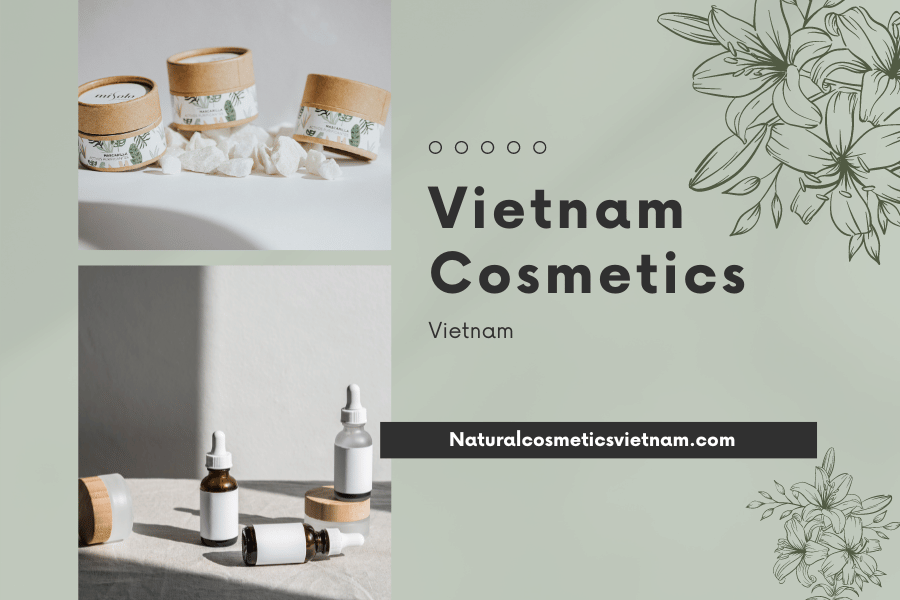
Confidence and Safety with Non-Toxic Cosmetics
Non-toxic cosmetics offer several benefits to users. Here are some of the key advantages:
Safety for Health
- Reduced Exposure to Harmful Chemicals: Non-toxic cosmetics are formulated without harmful chemicals commonly found in conventional beauty products. They exclude ingredients such as parabens, phthalates, formaldehyde, and sulfates, which have been linked to various health concerns. By using non-toxic cosmetics, individuals can reduce their exposure to these potentially harmful substances.
- Minimized Skin Irritations and Allergies: Non-toxic cosmetics prioritize the use of gentle and skin-friendly ingredients. They avoid synthetic fragrances, artificial colorants, and other irritants that can trigger skin allergies or sensitivities. This is particularly beneficial for individuals with sensitive skin or those prone to allergic reactions.
- Healthier Alternatives: Non-toxic cosmetics often incorporate natural and nourishing ingredients, such as plant extracts, essential oils, and botanicals. These ingredients can provide additional skincare benefits while being less likely to cause negative health effects. For example, natural oils like jojoba oil or shea butter can moisturize the skin without clogging pores or causing irritation.
- Non-Carcinogenic Formulations: Many toxic chemicals found in conventional cosmetics have been linked to an increased risk of cancer. Non-toxic cosmetics prioritize the use of ingredients that are considered safe and non-carcinogenic. This helps individuals avoid potential long-term health risks associated with the use of toxic substances.
- Safer for Specific Groups: Non-toxic cosmetics are especially beneficial for certain groups, such as pregnant women, infants, and individuals with compromised immune systems. By choosing non-toxic options, these individuals can minimize their exposure to potentially harmful substances and prioritize their well-being.
Reduced Risk of Allergies and Sensitivities
One of the significant benefits of non-toxic cosmetics is the reduced risk of allergies and sensitivities. Here are some key points regarding this aspect:
- Gentle and Non-Irritating Formulations: Non-toxic cosmetics are formulated with gentle and non-irritating ingredients. They avoid common irritants such as synthetic fragrances, artificial dyes, and harsh chemicals that can trigger allergic reactions or sensitivities in some individuals. By using non-toxic cosmetics, individuals with sensitive skin or prone to allergies can minimize the risk of adverse reactions.
- Exclusion of Common Allergens: Non-toxic cosmetics often exclude common allergens that can cause skin irritations. Ingredients such as gluten, soy, dairy, and nuts, which are known allergens for some individuals, are often avoided in non-toxic formulations. This ensures that the risk of triggering allergic responses is reduced, making non-toxic cosmetics suitable for a wider range of users.
- Hypoallergenic Claims and Testing: Many non-toxic cosmetic brands label their products as hypoallergenic, indicating that they are formulated to minimize the risk of allergic reactions. These brands may also conduct dermatological testing to ensure the products’ compatibility with sensitive skin. This provides additional assurance to individuals with allergies or sensitivities that the cosmetics are less likely to cause adverse skin reactions.
- Focus on Natural and Organic Ingredients: Non-toxic cosmetics often incorporate natural and organic ingredients known for their skin-friendly properties. These ingredients are less likely to cause irritations or sensitivities compared to synthetic counterparts. Non-toxic brands carefully select and source ingredients that are known to be gentle and well-tolerated by the skin.
- Personalized and Customizable Options: Non-toxic cosmetic brands often offer personalized or customizable options to cater to individual needs and sensitivities. They may provide a range of products suitable for specific skin types or concerns, allowing users to choose formulations that work best for their unique skin conditions. This customization helps minimize the risk of allergic reactions or sensitivities.
Nourishing and Beneficial Ingredients
Non-toxic cosmetics often incorporate nourishing and beneficial ingredients that provide various skincare benefits. Here are some key points regarding this aspect:
- Natural Extracts and Botanicals: Non-toxic cosmetics commonly include natural extracts and botanicals derived from plants. These ingredients offer a range of benefits such as antioxidant protection, soothing properties, and nourishment for the skin. Examples include aloe vera, chamomile, green tea, and rosehip oil, which can help calm inflammation, hydrate the skin, and promote a healthy complexion.
- Essential Oils: Essential oils are frequently used in non-toxic cosmetics for their aromatic and therapeutic properties. They can provide skincare benefits such as hydration, balancing oil production, and improving the overall texture of the skin. Common essential oils used in non-toxic cosmetics include lavender, tea tree, and rosemary.
- Vitamins and Antioxidants: Non-toxic cosmetics often incorporate vitamins and antioxidants, which play a vital role in promoting skin health. Vitamin C, vitamin E, and coenzyme Q10 are examples of ingredients used in non-toxic formulations to provide antioxidant protection, support collagen production, and improve skin elasticity.
- Hydrating Ingredients: Non-toxic cosmetics prioritize ingredients that help hydrate and moisturize the skin. Hyaluronic acid, glycerin, and plant-based oils like jojoba and argan oil are commonly used to replenish moisture and maintain skin hydration levels. These ingredients help prevent dryness and promote a plump and youthful-looking complexion.
- Nutrient-Rich Superfoods: Non-toxic cosmetics may include superfood ingredients known for their high nutrient content. Ingredients like matcha, turmeric, and spirulina are rich in antioxidants, vitamins, and minerals, which can nourish the skin and provide additional benefits such as brightening, detoxifying, and rejuvenating properties.
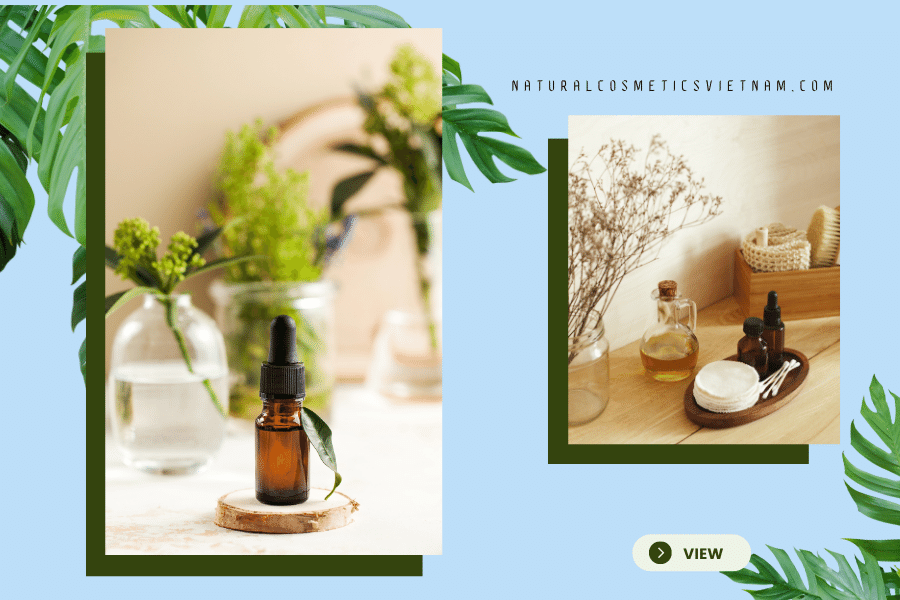
Confidence and Safety with Non-Toxic Cosmetics
Ethical Considerations
Ethical considerations are an important aspect of non-toxic cosmetics. Here are some key points regarding this aspect:
- Cruelty-Free: Non-toxic cosmetics often prioritize being cruelty-free, meaning they are not tested on animals. These brands ensure that their products are developed using alternative testing methods that do not involve animals. By choosing non-toxic cosmetics, individuals can support brands that prioritize animal welfare and contribute to the movement against animal testing.
- Vegan-Friendly: Many non-toxic cosmetic brands offer vegan-friendly options. This means that their products do not contain any animal-derived ingredients. Vegan cosmetics are suitable for individuals who choose to avoid animal products for ethical reasons. Non-toxic brands often clearly label their vegan products, making it easier for consumers to make informed choices.
- Sustainable and Responsible Practices: Non-toxic cosmetics are often committed to sustainable and responsible practices throughout their production processes. This includes environmentally friendly ingredient sourcing, utilizing renewable resources, reducing waste, and implementing eco-conscious packaging. Ethical brands strive to minimize their environmental impact and promote sustainability.
- Social Responsibility: Non-toxic cosmetic brands may also engage in social responsibility initiatives. This can include supporting fair trade practices, promoting ethical labor conditions, and giving back to communities through charitable partnerships or initiatives. By supporting ethical brands, individuals contribute to a more socially responsible and equitable beauty industry.
- Transparency and Consumer Education: Non-toxic cosmetic brands often prioritize transparency and consumer education. They provide clear and detailed information about their ingredients, sourcing practices, certifications, and ethical commitments. This empowers consumers to make informed choices aligned with their ethical values and encourages a culture of conscious consumerism.
Environmental Protection
Another significant benefit of non-toxic cosmetics is their contribution to environmental protection. Here are some key points regarding the environmental aspect:
- Sustainable Ingredient Sourcing: Non-toxic cosmetics often prioritize the use of sustainable and responsibly sourced ingredients. This means that the ingredients are obtained through ethical practices that minimize environmental impact, such as organic farming, fair trade, and renewable resource utilization. By supporting brands that use sustainable ingredient sourcing, individuals can contribute to the preservation of biodiversity and ecosystems.
- Reduced Chemical Pollution: Non-toxic cosmetics are formulated without harmful chemicals that can pollute the environment. Ingredients like parabens, phthalates, and sulfates can find their way into water sources and have negative effects on aquatic ecosystems. By using non-toxic cosmetics, individuals help prevent chemical pollution and promote cleaner and healthier environments.
- Biodegradable and Eco-Friendly Formulations: Many non-toxic cosmetics are designed with biodegradable and eco-friendly formulations. This means that the products break down naturally over time, reducing their environmental impact. Additionally, non-toxic cosmetics often come in packaging made from recycled materials or sustainable alternatives, further reducing waste and promoting recycling practices.
- Support for Animal Welfare: Non-toxic cosmetics are often cruelty-free and do not involve animal testing. By choosing these products, individuals support ethical practices that prioritize animal welfare. This promotes a more compassionate approach to beauty and discourages the use of animals for cosmetic testing purposes.
- Consumer Education and Consciousness: The rise of non-toxic cosmetics has led to increased consumer education and consciousness regarding the environmental impact of beauty products. By raising awareness and encouraging sustainable choices, non-toxic cosmetics contribute to a more environmentally aware and responsible consumer culture.
Effectiveness and Quality
Non-toxic cosmetics not only prioritize safety and environmental considerations but also offer effectiveness and quality. Here are some key points regarding their effectiveness and quality:
- Advanced Formulations: Non-toxic cosmetics often utilize advanced formulations that deliver effective results. These formulations are the result of extensive research and development, incorporating innovative ingredients and technologies. Non-toxic cosmetic brands invest in scientific advancements to create products that are both safe and highly effective.
- Nourishing and Skin-Friendly Ingredients: Non-toxic cosmetics are formulated with nourishing and skin-friendly ingredients that provide multiple benefits. Natural extracts, botanicals, vitamins, and antioxidants are commonly used to enhance the health and appearance of the skin. These ingredients nourish, hydrate, protect, and rejuvenate the skin, promoting a more radiant and youthful complexion.
- Targeted Solutions: Non-toxic cosmetics cater to various skincare concerns and needs. They offer a wide range of products designed to address specific issues such as acne, aging, dryness, and sensitivity. Non-toxic cosmetic brands understand the diverse needs of consumers and create targeted solutions that deliver visible and long-lasting results.
- Professional Standards and Certifications: Many non-toxic cosmetic brands adhere to professional standards and certifications. These certifications ensure that the products meet high-quality benchmarks and undergo rigorous testing. Examples include certifications for organic, natural, or clean beauty standards, which provide consumers with confidence in the quality and effectiveness of the products.
- Positive User Feedback: Non-toxic cosmetics have gained a strong following and positive user feedback. Many individuals have experienced improved skin health, enhanced appearance, and overall satisfaction with the results obtained from using non-toxic products. User testimonials and reviews highlight the effectiveness and quality of these cosmetics, reinforcing their reputation in the market.
Choosing and Using Non-Toxic Cosmetics
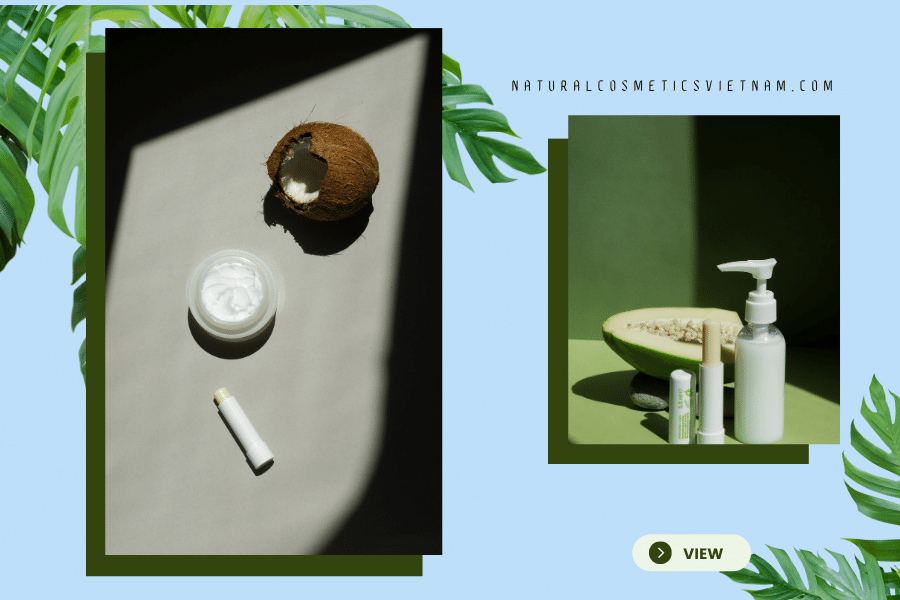
Confidence and Safety with Non-Toxic Cosmetics
Choosing and using non-toxic cosmetics involves making informed decisions and following best practices. Here are some key points to consider:
Read Ingredient Labels
When choosing non-toxic cosmetics, it’s crucial to read and understand the ingredient labels. Here are some key points to consider:
- Avoid Harmful Chemicals: Look for products that explicitly state they are free from harmful chemicals. Common toxic ingredients to avoid include parabens, phthalates, sulfates, formaldehyde, synthetic fragrances, and synthetic dyes. These chemicals have been associated with potential health risks and skin irritations.
- Understand Ingredient Lists: Familiarize yourself with common non-toxic and beneficial ingredients. Look for natural and plant-based ingredients such as essential oils, plant extracts, vitamins, and minerals. These ingredients are often safe and offer specific skincare benefits.
- Check for Allergens: If you have known allergies or sensitivities, pay attention to potential allergens on the label. Common allergens include nuts, soy, dairy, gluten, and certain essential oils. Avoid products containing ingredients that may trigger an allergic reaction.
- Order of Ingredients: Ingredients are listed in descending order of concentration. Be aware that the first few ingredients make up the majority of the product. If you’re looking for a specific active ingredient, ensure it’s listed near the beginning to ensure its effectiveness.
- Look for Certifications: Non-toxic cosmetics may carry certifications such as USDA Organic, COSMOS Organic, or Leaping Bunny (cruelty-free). These certifications provide reassurance that the product meets specific standards and has undergone testing or verification processes.
- Research Unfamiliar Ingredients: If you come across an ingredient you’re unfamiliar with, take the time to research it. Online resources, ingredient databases, and reputable skincare websites can provide information about its safety and potential benefits.
Research Brands
Researching brands is an essential step when choosing non-toxic cosmetics. Here are some key points to consider during your research:
- Brand Reputation: Look for brands with a good reputation in the non-toxic cosmetics industry. Consider how long they have been in business, their mission and values, and their commitment to producing safe and ethical products. Check customer reviews and feedback to gauge the overall satisfaction and trustworthiness of the brand.
- Transparency and Ingredient Sourcing: Choose brands that prioritize transparency and provide detailed information about their ingredient sourcing, production processes, and certifications. Look for brands that use sustainably sourced, organic, and natural ingredients. Transparent brands often share their values, quality standards, and commitments on their websites or packaging.
- Certifications and Standards: Pay attention to certifications and standards that the brand adheres to. Look for certifications such as USDA Organic, COSMOS Organic, Vegan, Cruelty-Free, or other relevant certifications. These certifications provide assurance that the brand meets specific criteria and follows ethical practices.
- Customer Support and Education: Consider the brand’s level of customer support and educational resources. Brands that offer educational content, skincare tips, and responsive customer service can enhance your overall experience and help you make informed choices.
- Environmental Commitment: Evaluate the brand’s environmental commitment. Look for brands that implement sustainable practices in their packaging, manufacturing processes, and overall operations. Consider their efforts to reduce waste, use eco-friendly materials, and support environmental causes.
- Social Responsibility: Some non-toxic cosmetic brands engage in social responsibility initiatives. Research their involvement in charitable partnerships, fair trade practices, or community support. Brands that prioritize social responsibility demonstrate a commitment to making a positive impact beyond their products.
- Price and Accessibility: Consider the brand’s pricing and availability. Non-toxic cosmetics can range in price, so find a brand that aligns with your budget. Also, check if the brand is available in your region or offers international shipping options.
Consider Personal Needs
Considering your personal needs is an important aspect when choosing non-toxic cosmetics. Here are some key points to consider:
- Skin Type: Assess your skin type to determine the specific needs of your skin. Whether you have oily, dry, combination, sensitive, or acne-prone skin, certain non-toxic cosmetics may be better suited for your specific skin type. Look for products that address your skin concerns and provide appropriate hydration, balance, and nourishment.
- Skin Concerns: Identify any specific skin concerns or conditions you want to address. Non-toxic cosmetics often offer targeted solutions for concerns such as aging, hyperpigmentation, acne, redness, or dullness. Look for products that contain ingredients known to address these concerns, such as retinol for anti-aging or niacinamide for brightening.
- Sensitivities or Allergies: Take into account any known sensitivities or allergies you have. Certain ingredients, even in non-toxic cosmetics, may still cause reactions in some individuals. Be aware of ingredients that may trigger sensitivities or allergies and opt for products specifically formulated for sensitive skin or labeled as hypoallergenic.
- Personal Preferences: Consider your personal preferences for product textures, scents, and application methods. Non-toxic cosmetics come in various forms, including creams, lotions, serums, oils, and powders. Choose products that align with your preferences to enhance your overall experience and enjoyment of the products.
- Makeup Style: If you’re specifically looking for non-toxic makeup products, consider your makeup style and preferences. Non-toxic cosmetics offer a wide range of options, from natural and subtle looks to more dramatic or vibrant styles. Look for non-toxic makeup products that align with your desired makeup look and provide the desired level of coverage and pigmentation.
- Ingredient Sensitivities: Be aware of any specific ingredients you may be sensitive to or prefer to avoid. Non-toxic cosmetics often provide ingredient lists that allow you to identify and avoid ingredients that may cause sensitivities. Make note of any ingredients you prefer to avoid due to personal preferences or sensitivities.
Patch Test
Performing a patch test is a recommended step when introducing new non-toxic cosmetic products into your skincare routine. Here are some key points to consider when conducting a patch test:
- Select a Small Test Area: Choose a small, discreet area of skin, such as the inside of your forearm or behind the ear, to perform the patch test. This allows you to observe any potential reactions without it being prominently visible.
- Cleanse the Area: Ensure that the test area is clean and free from any other skincare products or residues. Gently cleanse the area with a mild cleanser and pat it dry before proceeding with the patch test.
- Apply a Small Amount: Take a small amount of the non-toxic cosmetic product you want to test and apply it to the patch test area. Use a cotton swab or your fingertips to apply a thin layer of the product.
- Observe for Reactions: Allow the product to remain on the test area for at least 24 to 48 hours, or as instructed by the brand. During this time, observe the area for any signs of redness, itching, swelling, or irritation. If you experience any discomfort or adverse reactions, remove the product immediately and rinse the area with cool water.
- Check for Delayed Reactions: Some reactions may occur after the initial 48 hours. It’s important to continue monitoring the patch test area for several days to a week to check for any delayed reactions or sensitivities.
- Proceed with Caution: If no adverse reactions or sensitivities occur during the patch test period, it is generally safe to proceed with using the product as directed. However, always follow the recommended usage instructions provided by the brand to ensure optimal results and minimize the risk of any potential negative effects.
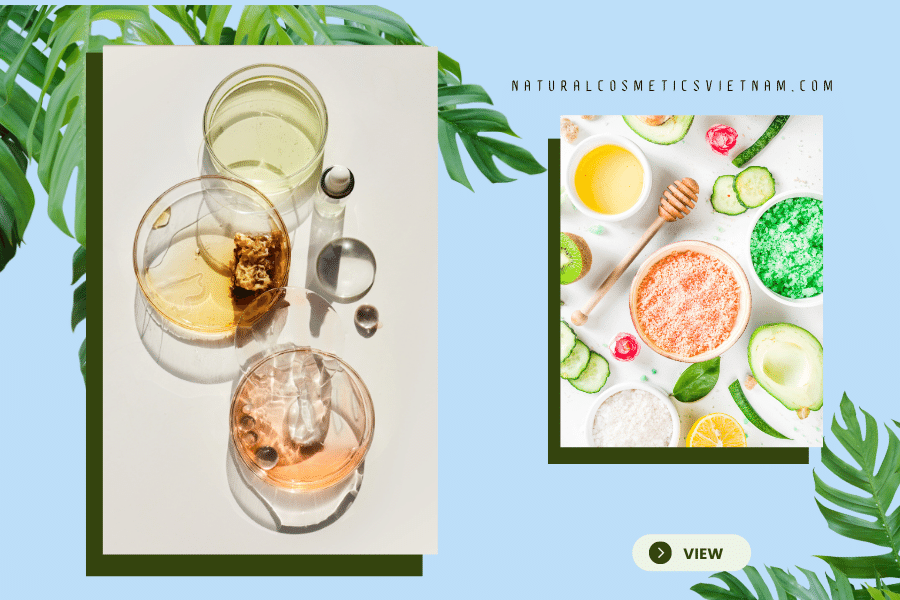
Confidence and Safety with Non-Toxic Cosmetics
Follow Usage Instructions
Following the usage instructions provided by the non-toxic cosmetic brand is crucial for achieving the best results and ensuring safety. Here are some key points to consider when using non-toxic cosmetics:
- Read the Instructions: Carefully read and understand the usage instructions provided by the brand. The instructions may include specific steps, application techniques, recommended frequency of use, and any precautions or warnings.
- Start with Clean Skin: Before applying non-toxic cosmetics, cleanse your skin thoroughly to remove any dirt, oil, or previous products. Clean skin provides a clean canvas for the products to work effectively and allows better absorption.
- Use the Recommended Amount: Apply the non-toxic cosmetic product using the recommended amount specified in the instructions. Using too little may not provide the desired results, while using too much may lead to wastage or potential adverse effects.
- Apply as Directed: Follow the recommended application technique and order of application. Some products may need to be applied in a specific sequence, such as serums before moisturizers, to ensure optimal absorption and effectiveness.
- Massage or Pat Gently: When applying non-toxic skincare products, use gentle massaging or patting motions to ensure even distribution and absorption. Avoid harsh rubbing or tugging, especially around delicate areas like the eyes.
- Allow for Absorption: Allow the non-toxic cosmetic products to fully absorb into the skin before applying subsequent products or makeup. This allows each product to work effectively and avoids any potential interference between different formulations.
- Adhere to Frequency of Use: Pay attention to the recommended frequency of use specified in the instructions. Some products may be intended for daily use, while others may be recommended for less frequent or specific use. Using products too frequently or infrequently may affect their efficacy or lead to unintended effects.
- Store Properly: Follow the instructions for storing non-toxic cosmetics properly. Some products may need to be kept in a cool, dry place or away from direct sunlight to maintain their stability and effectiveness.
Store Properly
Properly storing non-toxic cosmetics is important to maintain their effectiveness, quality, and shelf life. Here are some key points to consider when storing non-toxic cosmetics:
- Keep in a Cool, Dry Place: Store non-toxic cosmetics in a cool and dry area, away from direct sunlight and excessive heat. High temperatures can alter the texture, consistency, and efficacy of the products. Avoid storing them in areas like bathrooms, where humidity levels and temperature fluctuations are high.
- Close Containers Tightly: Ensure that the containers or packaging of non-toxic cosmetics are tightly closed after each use. This helps prevent air and moisture from entering, which can degrade the product’s quality and compromise its efficacy.
- Avoid Contamination: Keep non-toxic cosmetics free from contamination by using clean hands or sanitized applicators when handling the products. Avoid touching the product directly with dirty fingers, as it can introduce bacteria and other impurities.
- Follow Expiry Dates: Non-toxic cosmetics, like any other beauty products, have expiration dates. Check the packaging or product labels for the Period After Opening (PAO) symbol or specific expiration date. It indicates how long the product remains safe and effective after opening. Discard any non-toxic cosmetics that have passed their expiration dates.
- Separate from Moisture: Keep non-toxic cosmetics away from moisture sources, such as sinks, showers, or steamy environments. Moisture can lead to product degradation, mold growth, and bacterial contamination. Consider using airtight containers or storage boxes to further protect the products from humidity.
- Avoid Extreme Temperatures: Avoid exposing non-toxic cosmetics to extreme temperatures, such as freezing cold or excessive heat. Extreme cold can cause product separation or texture changes, while extreme heat can melt or degrade the products.
- Store Fragile Products Carefully: Fragile non-toxic cosmetics, such as pressed powders or delicate makeup items, may require extra care. Store them in a secure and stable position to prevent breakage or damage.
- Follow Brand-Specific Instructions: Some non-toxic cosmetic brands may provide specific storage instructions for their products. Check the brand’s website or packaging for any specific guidance on how to store their cosmetics.
Practice Good Hygiene
Practicing good hygiene is essential when using non-toxic cosmetics to maintain product integrity and promote skin health. Here are some key points to consider for practicing good hygiene:
- Cleanse Your Skin: Before applying non-toxic cosmetics, cleanse your skin using a gentle cleanser to remove dirt, oil, and impurities. This helps create a clean canvas for the cosmetics to be applied effectively.
- Wash Your Hands: Before touching non-toxic cosmetics or applying them to your face, make sure to wash your hands thoroughly with soap and water. This helps prevent the transfer of dirt, bacteria, or other impurities onto your skin or into the product.
- Use Clean Applicators: Use clean brushes, sponges, or fingertips to apply non-toxic cosmetics. Regularly clean or wash your applicators to remove product buildup and bacteria. Avoid sharing applicators to minimize the risk of cross-contamination.
- Avoid Double Dipping: To prevent contamination, avoid double-dipping into product containers. Use a clean spatula or disposable applicator to scoop out the desired amount of product, especially for creams, lotions, or masks.
- Keep Packaging Clean: Ensure that the packaging of non-toxic cosmetics remains clean and free from product residue or spills. Wipe off any excess product or buildup from the product containers to maintain cleanliness and prevent product contamination.
- Replace Expired Products: Regularly check the expiration dates of your non-toxic cosmetics. Discard any products that have passed their expiration dates to avoid using expired or compromised products that may be less effective or potentially harmful.
- Avoid Sharing Cosmetics: Sharing cosmetics, even non-toxic ones, can lead to the transfer of bacteria, viruses, or other pathogens. It’s best to avoid sharing your cosmetics with others to maintain good hygiene and prevent the risk of infections.
- Store Properly: Store your non-toxic cosmetics in a clean and hygienic environment, as discussed earlier. This helps prevent contamination and maintain the integrity of the products.
Conclusion: Non-toxic cosmetics provide not only external beauty but also confidence and safety for health. Caring about and choosing non-toxic cosmetics benefits not only individuals but also contributes to environmental protection and animal welfare. Each person’s contribution to using non-toxic cosmetics helps create a safe and sustainable beauty community.

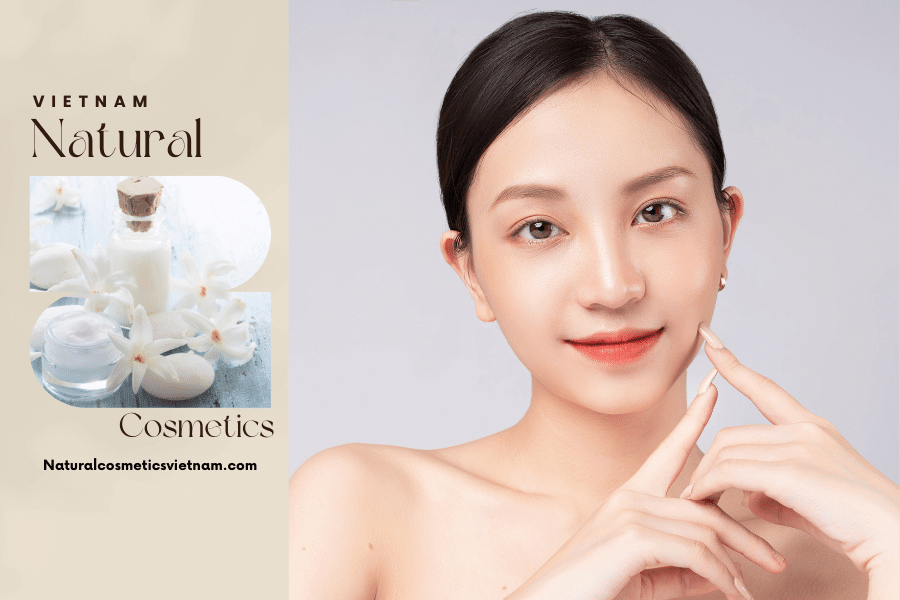









Leave a reply